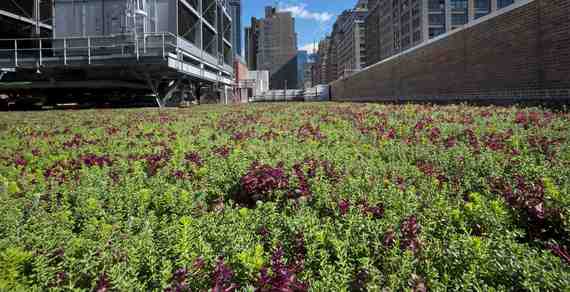El Niño has arrived and Southern California is finally getting some rain.
Despite a welcome break from one of the worst droughts on record, climatologists caution that weather patterns over the next few months are likely to be extreme. Current conditions are similar to those leading up to the 1997 El Niño, which resulted in an estimated $550 million in storm-related damage. Floods and mudslides are expected. In preparation, the California Department of Transportation is increasing maintenance staff in Los Angeles by 25%, stockpiling sandbags and tuning up plows and other earth moving equipment.
Weather patterns like El Niño (Intensified by climate change) force us to acknowledge the vulnerability and inefficiency of the built environment. Meanwhile, In Los Angeles, even relatively small amounts of rain can flood freeways and erode hillsides and roadways (sending them tumbling) due to the preponderance of impermeable surfaces. Thanks to the Los Angeles Department of Water and Power, an increasing amount of the stormwater that does make it down the drain is diverted to spreading fields and eventually percolates back into the aquifer. The LADWP and the Santa Monica Mountains Conservancy have installed bioswales and underground pipes that catch chronic floodwaters, treat the runoff and pump it into the ground. But even in a perfect world, the majority of the highly polluted water ends up as overflow. What lands as rainwater, intended for absorption, instead hits the impermeable roads, roofs, and sidewalks of Los Angeles and the city (and nature) suffers.
One of the best strategies for improving the city's resilience and water efficiency is to mimic the way undisturbed environments receive rain and adjust the built landscape to reflect qualities found in nature. Prior to urbanization, the land that is now Los Angeles could easily absorb 95% of the rain that fell. Today, stormwater floods the city with polluted water--wreaks expensive havoc--and then disappears into the ocean.
If Los Angeles were spongier heavy rain would have very few negative consequences, aside from inconvenience. Absorbent surfaces prevent stormwater from entering drains all at once, meaning less water on freeways and in sewer systems and more in the aquifer. Surfaces that include soil and plants also filter out pollutants. Permeable pavement, rain gardens, parks and retention basins all contribute to more effective and efficient stormwater management.
Living roofs are a powerful way to soften the urban hardscape. A living roof, or green roof, is like a lasagna of engineered materials and light weight soil designed to support a healthy plant ecosystem on a rooftop. Green roofs absorb up to 90% of the rain that falls on them, filter it and then allow for its slow release into spreading fields and evaporation. During a storm, a 2,000 square foot roof can prevent over 1,000 gallons of rainwater from rushing down the drain. A collection of large living roofs can slow down a substantial amount of runoff and facilitate its return it to the aquifer. The natural evaporation process can lead to more rain events too, by more closely matching the natural hydrologic cycle that is lost through urbanization.
Living roofs contribute to resilience in many other ways. Not only do they absorb and filter rainwater during storms, they also reduce ambient temperatures during heat waves (which are projected to increase over the coming decades), through the process of natural evaporation. Drought tolerant plants grown on the roof provide insulation in summer and winter, keeping living spaces comfortable and reducing energy costs. Green roofs also pull carbon dioxide out of the air; they actively absorb one of the agents driving climate change in the first place.
Every time we build a green roof we invite nature back into the city. We weave natural patterns of resilience and efficiency into the built environment, using softness to strengthen our design.

